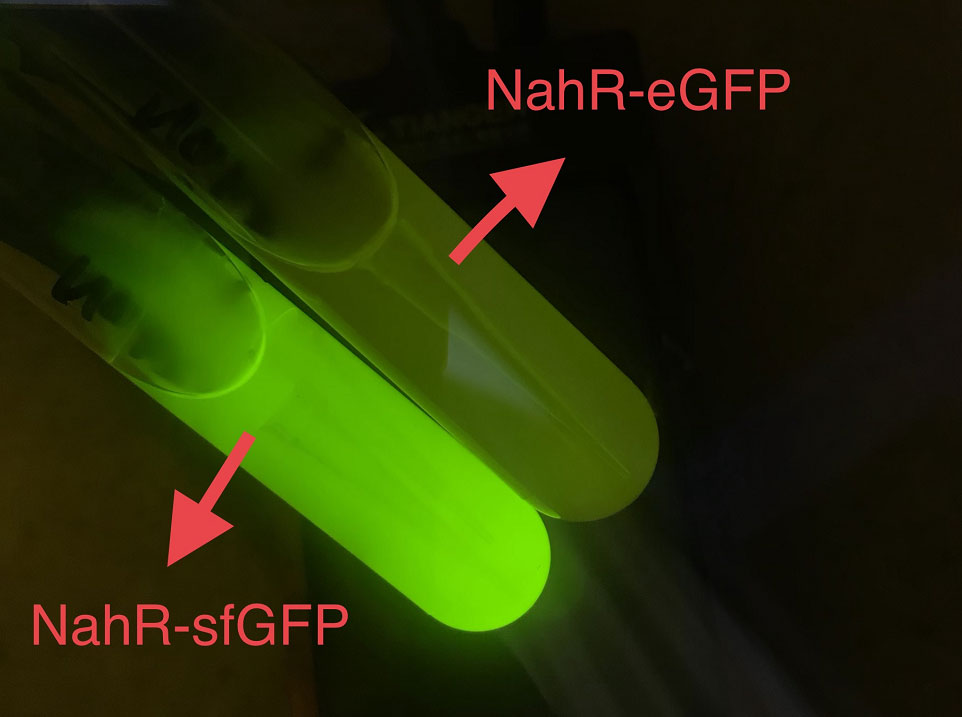<!DOCTYPE html>


Home

Team

Project

Results

Judging

Part

HP

Lab
Home
Results
Judging
Overview
We characterized the sensor DmpR and the sensor NahR from 2013 Peking iGEM team. For further characterization of the existing components, our data from the experiment is shown bwlow:
DmpR:
We constructed it based on existing part BBa_K1031222.

And NahR:
We constructed it based on existing part BBa_K1031610.

1. Sensor induced by small molecules
First, we used the most sensitive molecule of each sensor that was reported by the previous teams, to test whether the sensor itself is good:



Through the corresponding small molecule sensing experiment, NahR sensors and DmpR sensor have great induction effects on aromatic small molecules. Among which NahR-sfGFP was the best! It is 63 times of the negative control.
2. sensor induced by PAN

And here is the fluorescence of different sensors induced by PAN.This data shows the same result that NahR sensor responded best,but DmpR doesn't respond to the PAN.
3. Sensor induced by guaiacol
Then, We assisted Team SHSBNU_China to test the effect of the guaiacol response.

Here we can see that Nahr-sfGFP has good effects on the guaiacol response, which can be used for their experiment.
